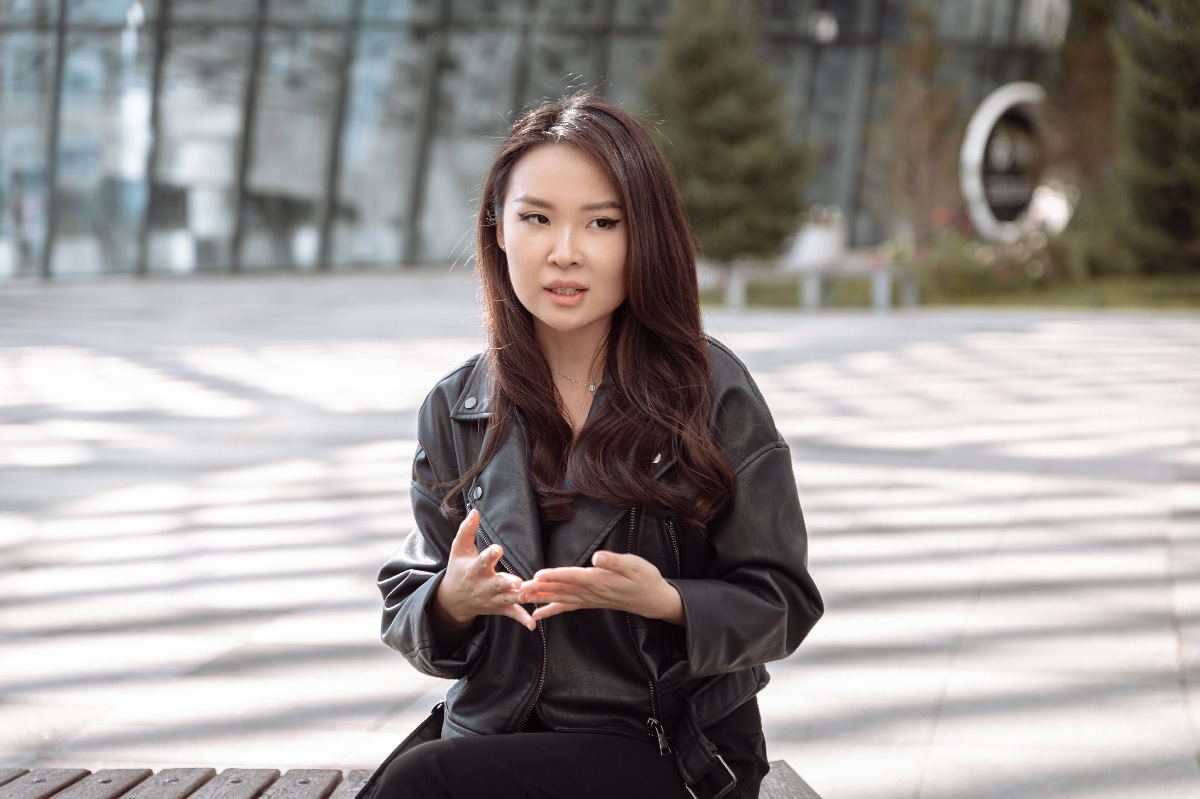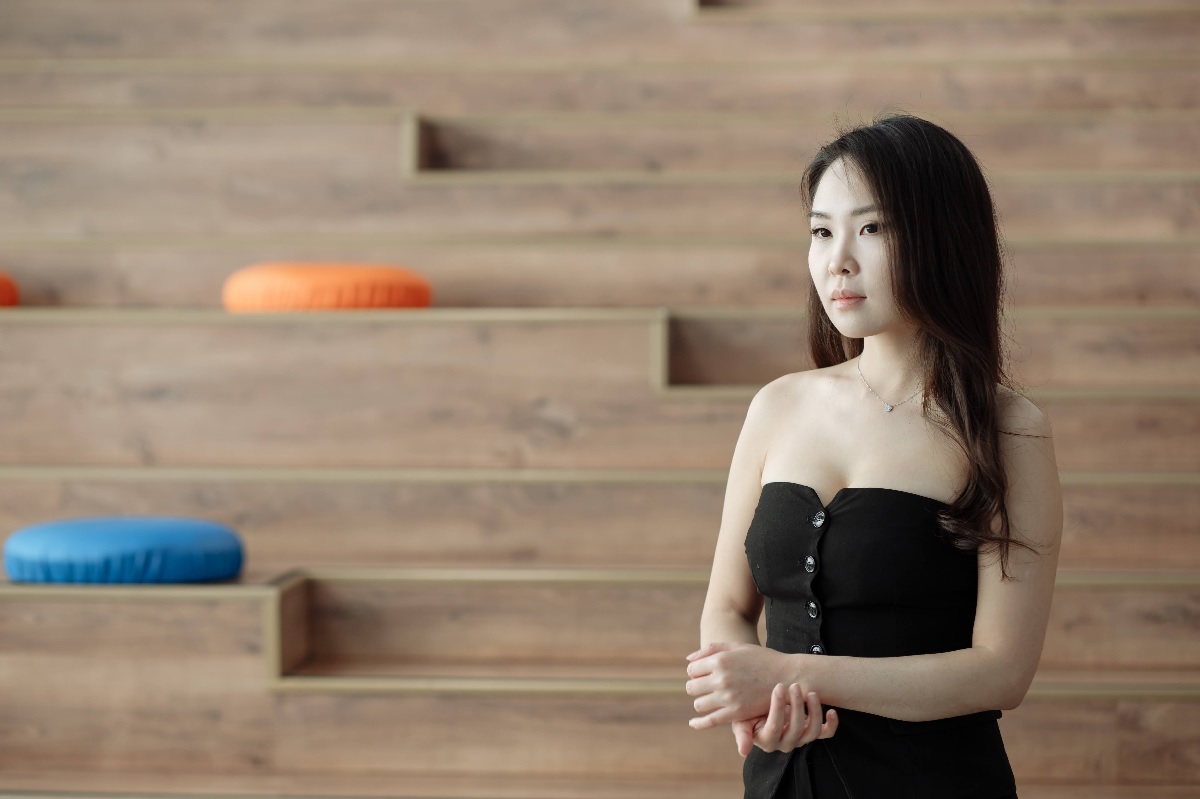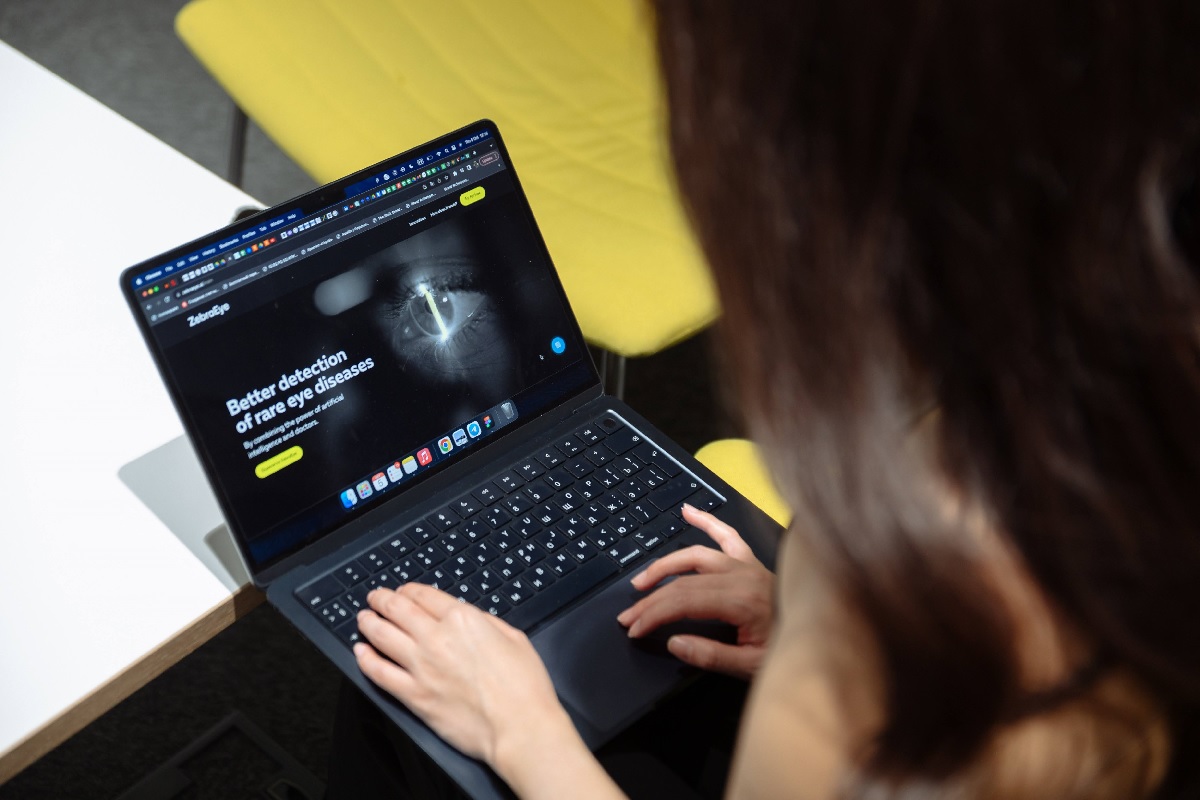Neural Network Trained by Kazakhstanis Can Identify Rare Eye Diseases, Excluding Thousands of Incorrect Diagnoses

ZebraEye, an AI-based cloud solution, aids doctors in diagnosing rare eye diseases through medical images. Despite its six-month operational period, the startup has already secured initial contracts with clinics in Kazakhstan. The project's founders, led by CEO Cerebra Doszhan Zhussupov, plan to expand into the USA and are gearing up for the pre-seed round.
Discover how the neural network can assist healthcare professionals globally and explore the advantages of the Kazakhstani solution compared to foreign alternatives in an interview with Yana Ten, CEO, and co-founder of ZebraEye. This interview is part of the collaborative project between Digital Business and Astana Hub, titled “100 Startup Stories of Kazakhstan”.
“When a non-obvious disease hides behind common symptoms, it can easily go unnoticed”
— Yana, your experience in the startup industry is relatively recent. Would you mind sharing your background?
— I stumbled into IT accidentally. In 2019, I began working as a marketer at the DAR group of companies, where I gained experience in devising startup development strategies. I evolved into a versatile specialist capable of drafting product requirement specifications and facilitating product launches. Later, I joined MyVentures, where I delved into the world of venture investments.
Subsequently, I was recruited to the UAE at the hybrid company Metayasi, which focused on cryptocurrencies. I spent approximately a year there until the crypto winter intensified, rendering it impractical to remain any longer.

I returned to Kazakhstan last September. I finished my training at YCombinator Startup School and embarked on creating a startup at the intersection of AI and architecture.
– Was your interest in AI triggered by the hype surrounding it?
– My interest in AI technologies has been long-standing. It appears that they have the potential to reduce human error, which can come at a significant cost, regardless of the field.
My initial startup idea revolved around using AI to create 3D models of buildings. Simply inputting the land plot number would prompt the program to provide relevant information on geology, climate, and construction regulations. Subsequently, the neural network would generate the project based on the input data received.
The co-founders of my current startup, Arman Ospanov and Doszhan Zhussupov, served as my mentors. During our work on the project, the concept of ZebraEye emerged. Recognizing the challenge of managing two ventures simultaneously, I made the decision to opt for the medtech startup, as it appeared more promising to me.
— At first glance, the name of the startup seems unrelated to medicine. What prompted you to choose such a name?

— It's a common case where we tend to opt for the more recognizable choice and overlook less apparent possibilities. This analogy extends to medicine, where a subtle disease camouflaged by ordinary symptoms might escape detection. This forms the basis of the zebra effect concept.
In one episode, Dr. House famously remarked, "I looked for a zebra, as all horses were excluded by my colleagues." His unconventional thinking allowed him to perceive what other doctors had overlooked. We embedded a similar essence into the name of our startup.
“Those seeking a peaceful life typically steer clear of startups”
—As far as I'm aware, you've been dealing with significant health issues for the past six months. Would you be willing to share more about this?
— Two months into my tenure at the startup, doctors discovered a growing tumor. I was already aware of its existence, but had been assured it wouldn't expand. Unfortunately, it did. The tumor led to anemia, and the shortage of red blood cells resulted in tachycardia, making surgery inadvisable.

The medical team was concerned about unmanageable bleeding during the tumor resection. Consequently, I began taking substantial medication doses before eventually undergoing surgery. Ultrasound revealed that the tumor had grown to 7 centimeters, resembling the size of a three-month fetus, leading to complications during the operation. Fortunately, the tumor was benign.
— And did you continue working?
–I was absent from the office only during the surgical period. For a considerable duration, no one was aware of my treatment. Occasionally, due to the high doses of iron, I experienced fever and felt unwell. During these instances, I worked from home.
I didn't want to burden my team with my issues and cause undue concern. I believe Arman was taken aback when I disclosed my situation, and the developers are still unaware of my "adventures," as I call them. Nevertheless, we've made significant strides in terms of our products, and my treatment had no impact on the project.
— Didn't you consider taking sick leave? Your health should take precedence.

— I believe individuals who desire a peaceful life usually avoid startups. I had the chance to take a break, considering we had no clients or commitments to investors. However, I am naturally prone to anxiety. When I learned that I was chosen by Google for Startups, I flew to Astana just one week after the surgery, despite being advised against flying. I think every startup entrepreneur has a touch of being a bit of a psycho.
“Presently, our model can identify six types of diseases with 99% accuracy”
— What problem does your product solve?
– In an environment marked by declining ecological conditions, unhealthy lifestyles, and pervasive gadget usage, our eyes are the first to bear the brunt. Scientific projections suggest that the near future may bring about an epidemic of eye diseases. Considering the ongoing rate of doctor resignations, we may struggle to cope with this impending surge.
Ophthalmology is a multifaceted field, and we've chosen to concentrate on rare diseases, which afflict 500 million people worldwide. Alarmingly, these conditions are misdiagnosed in 40% of cases.

It's disheartening that 80% of rare diseases stem from genetics. Even if a patient is treated, there's a significant likelihood of these diseases being inherited. Given the global population's demographic expansion, the likelihood of these disorders will only rise. Hence, our aim was to develop a valuable tool to aid doctors. We commenced MVP development in March 2023 and conducted successful testing.
— Could you tell us more about your team and the database of images used for training the neural network?
— We swiftly assembled the working group, which now consists of one ML engineer, as well as one frontend and one backend developer.
Regarding the data, we required a US image database to facilitate our entry into the US market. We obtained access to 100,000 images from The Shiley Eye Institute of the University of California San Diego. Currently, our model can identify six types of diseases, including rare pathologies, with 99% accuracy.
— Are there any plans to broaden the range of detectable diseases in the near future?
— Indeed, identifying six diseases is no small feat. For instance, there is a project in Kazakhstan that only diagnoses a single pathology. Comparable foreign solutions operate along the same lines. Hence, we are ahead of them in this regard.

Currently, our project's progress hinges on the available data. Moving forward, we plan to prioritize optical coherence tomography. This solution enables doctors to conduct comprehensive scans of eye tissues using infrared rays. Many eye clinics are equipped with this technology. We also analyze data from the endothelial microscope, although its usage is not widespread in the CIS. For instance, there are only five such machines in Kazakhstan.
— What is the process of integrating the system into hospitals, and what are the necessary requirements for doing so?
— To simplify the user journey for doctors, we designed a user-friendly cloud solution. It simply entails visiting the website, uploading the image, and receiving prompt results from the system. Hospitals do not need to install anything to utilize our service; an internet connection is all that's necessary. As the market matures and doctors become more accustomed to such technologies, we plan to integrate the system with medical equipment.
—Are there any plans to venture into regional markets and collaborate with municipal hospitals?
— We are also exploring opportunities with state polyclinics. Considering the heavy workload, doctors often have only 5-10 minutes per patient. I firmly believe that our solution will be beneficial for them.

Another significant issue is the scarcity of medical equipment in small towns and rural regions. Collaborating with the Ministry of Health to supply equipment to regional hospitals under a program would be highly beneficial. We could offer our software as a digital aid for doctors in these settings.
“While it typically takes medtech startups a considerable amount of time to generate revenue, we have already finalized two transactions”
– At the initial stage, who were the project's investors?
— We have been developing the startup using our own funds, primarily sourced from Arman Ospanov and Doszhan Zhussupov. We aim to raise a pre-seed round by the end of the year to support our scientific endeavors, acquire data, and enhance our technologies. Salaries will be sustained through generated revenue.
— What will be your source of income?

– We have chosen a subscription model, with the fee varying based on the country, the quantity of diagnosed diseases, and the subscription duration, which can be one month or longer. In the case of the USA, the minimum charge for analyzing one image under the subscription will be USD 50.
— This year, you participated in two acceleration programs. How beneficial were they for the project?
— Just two months into the project, I was accepted into various accelerators. It's worth noting that no traction or secured investments were necessary, only a simple MVP. I believe this was due to investors showing a keen interest in medtech and actively investing with an eye on future prospects.
While I was accepted into the Draper University program in May, I unfortunately did not obtain a US visa. However, I applied to the Silkway Accelerator for the Google for Startups program, and I am pleased with my decision.

Commercialization poses significant challenges within the medtech industry. While it often takes medtech startups a substantial period to generate revenue, we have already completed two transactions and are in discussions for integration with the prominent private clinic chain Astana Vision, thanks to trackers from the Google program.
“The United States has a distinct culture, and people are more accessible to reach out to”
— Earlier, you mentioned your preparation for expansion into the USA. It is a significant challenge, even for experienced entrepreneurs who have achieved success in the Kazakhstan market. Does the prospect of international competition not concern you?
— Entering the US market with a medtech startup is notably challenging due to the highly regulated nature of the medical field. However, having influential connections in the USA can significantly ease the process. Presently, we are in talks with a professor from Stanford Health Care. If he comes on board, we will have the opportunity to conduct clinical trials at minimal or no cost. This collaboration will also grant us access to new data without incurring additional expenses.

In the USA, we have identified four primary competitors; however, AI diagnostics is still a relatively young field, and our niche is quite specific. The oldest project in this domain is at most five years old. Contrary to initial impressions, the competitive landscape isn't as intense. In fact, the success of other ventures serves as an advantage for us, as we won't have to start our journey from scratch.
— To what extent does the experience of your co-founders contribute to the development of the startup?
— Cerebra allocates significant resources to market research. As the first medtech startup from Kazakhstan to enter the USA and participate in prestigious programs, its experiences can serve as a valuable source of knowledge. We can adopt proven strategies that have worked for them. I have an excellent opportunity to acquire this knowledge firsthand.
My team and I firmly believe that a CEO should be resilient and self-reliant. Consequently, I tend to handle tasks personally, fostering a habit of efficiency. For instance, I personally reached out to California University and arranged to obtain the images.

In Kazakhstan, it can be challenging at times to reach out to someone, especially given the relatively young IT industry. The United States, on the other hand, has a more accessible culture, making it easier to approach individuals. If you contact a professor regarding your project, they are likely to understand and offer assistance


